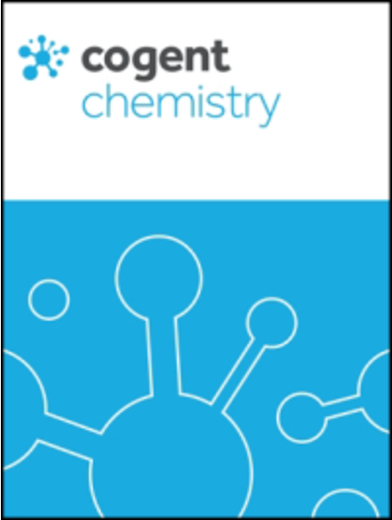Carboxymethyl chitosan zinc supplement: Preparation, physicochemical, and preliminary antimicrobial analysis
引用次数: 5
Abstract
Abstract Enrichment of carboxymethyl chitosan with zinc provides alternative means of producing aqueous soluble chitosan-based material with antimicrobial and essential trace element properties. The change in FTIR spectra of bands at 3,266 and 3,106 cm−1 of the carboxymethyl chitosan from a strong to a weak band confirmed the formation of carboxymethyl chitosan zinc supplement. From the EDX result, elemental composition of carboxymethyl chitosan is 52.89% carbon, 39.34% oxygen, 0.38% sodium, 0.54% aluminum, 2.61% calcium, and 4.19% aluminum, while carboxymethyl chitosan zinc supplement recorded 49.55% carbon, 40.40% oxygen, 1.28% sodium, 2.37% nitrogen, and 6.40% zinc. The XRD spectrum of carboxymethyl chitosan showed a lower peak intensity as compared with that of its zinc supplement. The antibacterial activities showed that carboxymethyl chitosan zinc supplement was active against all tested bacterial having recorded 6.00, 5.00, 3.00, 7.00, and 6.00 zone of inhibition (mm), respectively, against Staphylococcus aureus, Bacillus cereus, Pseudomonas syringae, Pseudomonas aeruginosa, and Escherichia coli, while carboxymetyhl chitosan was active only against S. aureus (6.00 mm). Antifungal activities revealed that carboxymethyl chitosan zinc supplement had higher zone of inhibition (mm) 42.22, 40.00, 37.78, and 48.88 mm against Collectotrichum falcritum, Rhzoctonia solani, Colletotrihum lindematianum, and Trichhoderum rubrum, while carboxymethyl chitosan recorded 26.66, 18.88, 15.88, and 22.22 respectively. The combination of aqueous solubility and antimicrobial activities of the zinc-supplemented carboxymethyl chitosan prepared should make it a good replacement for carboxymethyl chitosan in various industrial applications like food, cosmetics, biomedical, and pharmaceutical.羧甲基壳聚糖锌补充剂:制备、理化及初步抗菌分析
用锌富集羧甲基壳聚糖为制备具有抗菌和必需微量元素性能的水溶性壳聚糖基材料提供了一种新的方法。在3266和3106 cm−1处,羧甲基壳聚糖的FTIR光谱由强带变为弱带,证实了羧甲基壳聚糖锌补充剂的形成。EDX结果表明,羧甲基壳聚糖的元素组成为碳52.89%、氧39.34%、钠0.38%、铝0.54%、钙2.61%、铝4.19%,而羧甲基壳聚糖补锌的元素组成为碳49.55%、氧40.40%、钠1.28%、氮2.37%、锌6.40%。羧甲基壳聚糖的XRD谱与锌补剂相比,表现出较低的峰强度。羧甲基壳聚糖锌对金黄色葡萄球菌、蜡样芽孢杆菌、丁香假单胞菌、铜绿假单胞菌和大肠杆菌的抑制区分别为6.00、5.00、3.00、7.00和6.00 (mm),而羧甲基壳聚糖仅对金黄色葡萄球菌(6.00 mm)有抑制作用。羧甲基壳聚糖锌对镰孢炭疽菌(Collectotrichum falcritum)、茄灰炭疽菌(rhizoctonia solani)、林氏炭疽菌(Colletotrihum lindematianum)和红毛炭疽菌(trichoderum rubrum)的抑制区分别为42.22、40.00、37.78和48.88 mm,羧甲基壳聚糖对红毛炭疽菌的抑制区分别为26.66、18.88、15.88和22.22 mm。所制备的补锌羧甲基壳聚糖具有良好的水溶性和抗菌性能,有望在食品、化妆品、生物医学和制药等领域替代羧甲基壳聚糖。
本文章由计算机程序翻译,如有差异,请以英文原文为准。
求助全文
约1分钟内获得全文
求助全文

 求助内容:
求助内容: 应助结果提醒方式:
应助结果提醒方式:


